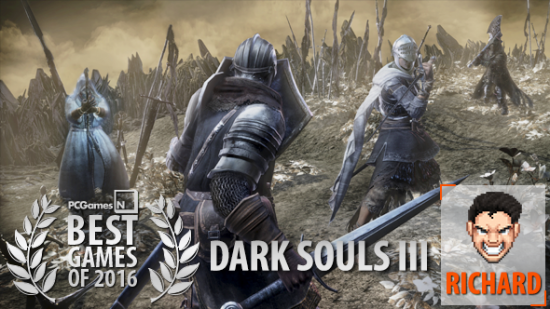In the run up to the PCGamesN Awards on December 23rd – mark your diaries, people – we’ll be publishing daily staff picks of the finest games 2016 has had to offer. Today it’s Rich, who’s topped up his Estus flask in preparation for this battle of wills.
Dark Souls III is almost, but not quite, as good as the original Dark Souls. It’s an odd way to begin a case that it’s the best game this year, but being almost as good as a genuine contender for the best game ever is pretty high praise.
It’s been a great year for games. Check out some of the other contenders in the best PC games of 2016.
In a few specific ways, Dark Souls III does manage to surpass the original. There’s little doubt it’s more mechanically refined, with a much wider range of weapons, armour and spells enabling more character builds, customisation, and tactics in battle. I also prefer the injection of pace that Bloodborne’s influence has brought to the combat.
Then there are the side quests, which are many and conflicting, giving incentive to replay Dark Souls III beyond just achievement-hunting. NPCs in the original would typically Hollow and go mad near the end of the game, which was tragic to see at first, but has now lost the power to shock. Characters in Dark Souls III tend to meet more particular, and more sinister, ends; returning director Hidetaka Miyazaki’s twisted idea of a wedding leaps pretty readily to mind.
The world these people inhabit is an improvement, at least over Dark Souls II’s Drangleic. Instead of nonsensical castles at the top of windmills, Lothric is a land of sensible but significant transitions: a pretty, leafy swamp yields to a black and poisonous one, subterranean catacombs emerge onto a cliffside or descend into an infernal cavern. The return of clever shortcuts also helps these places to gel in your mind as you explore on foot, rather than hopping between endless bonfires. After just one run through the unpeeling layers of the Cathedral of the Deep, all served by one bonfire, I knew and understood it better than any other level in a game this year.
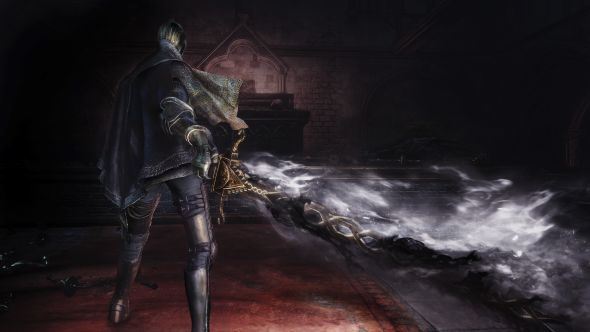
The black sludge of humanity that taints the Cathedral, and several other parts of Lothric as the fire fades, is typical of the Dark Souls aesthetic. These games have always been defined by a uniquely grotesque beauty, and with the advantage of current hardware, Dark Souls III absolutely nails this. The desolate majesty of the city of Irithyll, the wind-blasted slopes of Archdragon Peak, the leafy swamp on the Road of Sacrifices – these put even Anor Londo in the shade.
Of course – spoilers – Anor Londo reappears, in one of many references to the original Dark Souls. This is something a lot of writers criticised; I read several reviews that said Dark Souls III was over-reliant on past glories, a gaming version of The Force Awakens, the product of Miyazaki guzzling the Member Berries.
And I agreed, at first. After the tokenistic reappearance of Andre the Blacksmith – so, he’s immortal? Fair enough – and then a Siegmeyer clone, I too worried that Miyazaki was more interested in reminding us how good Dark Souls was rather than trying to give us something better. But after reaching a sunless Anor Londo, debased by Aldrich and Sulyvahn, the corpse of the gentle giant still at the foot of the stairs after our meeting in another life, I realised these throwbacks achieve more than simply exploiting our nostalgia. They reinforce Dark Souls III’s motif of decay, of a cycle that is finally ending.
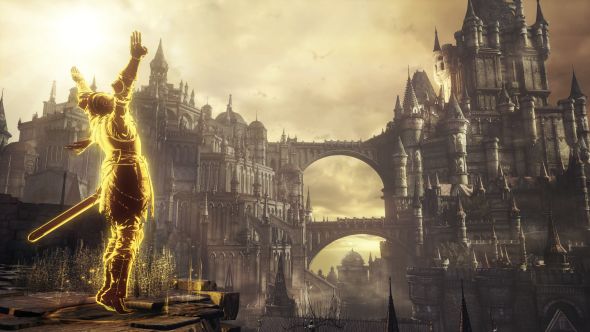
The atmosphere and the difficulty of the original Dark Souls inevitably forged strong memories – both positive and negative, but strong – in anyone who stuck it out. Dark Souls III uses those memories to illustrate the world’s collapse into entropy: if you thought Lordran was bleak, wait until you see what time has done to the people and places you remember best. It’s a powerful experience, mostly bitter, but occasionally sweet.
For instance, the presence of Siegward, that Siegmeyer clone, makes more sense when you finish his quest. I guarantee that anyone who saw his hapless predecessor at the bottom of Ash Lake welled up when Siegward heroically slew Yhorm the Giant. Yhorm was his friend, but in killing him Siegward has kept a promise, despite his constant blundering. It’s not a happy ending, but it’s fitting for a man so dutiful. It’s what this marvellous, quixotic fool deserves. And you thought Dark Souls was only capable of cruelty.
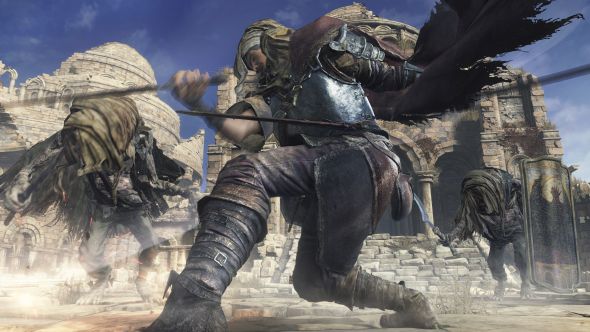
One last thing that’s made a huge difference to my enjoyment of the newest Dark Souls compared to the oldest is YouTube. The Dark Souls series has been a godsend to content creators, with entire channels built on making sense of its obscure lore, guiding players through its bosses, PvP, quests and character builds, and playing devious pranks via its oft-imitated invasion system.
This marriage between Dark Souls and YouTube may have been a happy accident at first, but I’m pretty sure Miyazaki understands it very well now. Though creation itself is out of his hands, Dark Souls III’s scale and depth provides the most fertile playground yet for content creators, who have honed their skills after seven years of maturation.VaatiVidyais even more insightful now than when he started, and I have seldom laughed harder at anything on YouTube than Iron Pineapple‘s mischief-making. One of my favourite stories involves the Fashion Police, a player who gives sartorial tips to others by imitating their outfit, but with a couple of subtle tweaks. Only in Dark Souls. More specifically, only in Dark Souls III.
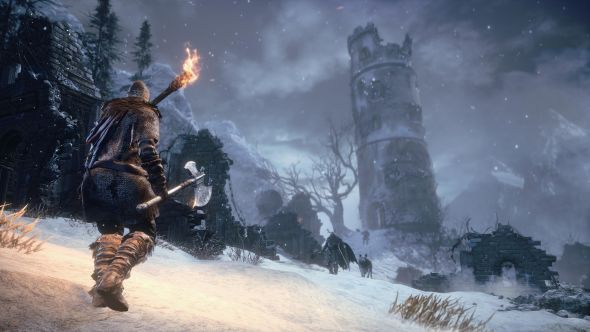
Games journalists can be fickle folk, ever chasing the clever (or at least clickable) angle. Back in 2009-11, when Demons and then Dark Souls were still fresh, the think-pieces proclaimed ‘Dark Souls proves games don’t have to pander to the player’, or ‘It actually has a really good story, it just doesn’t throw it in your face’, and of course ‘OMG it’s so hard but so fair’, which immediately became the quintessential Dark Souls cliché.
But now it’s 2016, and we’ve got three Dark Souls games plus DLC and Bloodborne. Dark Souls III still got mostly great reviews, but there were a few notable exceptions, and there’s been a definite contrarian trend in the commentary. It began with fretting over the near-annualisation of FromSoftware games – too much of a good thing, and all that – and then led to angles like ‘Actually, Dark Souls is overrated’, or ‘Actually, we’d rather games were easy after all, cheers’.
Well, bollocks to you/us, fickle games journalists, we were right the first time. Not only does the essential formula of Dark Souls still make a brilliant game, but Dark Souls III is a gorgeous and intelligent refinement of that formula. By definition, it can’t be as blazingly original – as grossly incandescent, wink – as the first, but even without the shine of novelty, it’s almost as good. That makes it good enough to be my Game of the Year.
